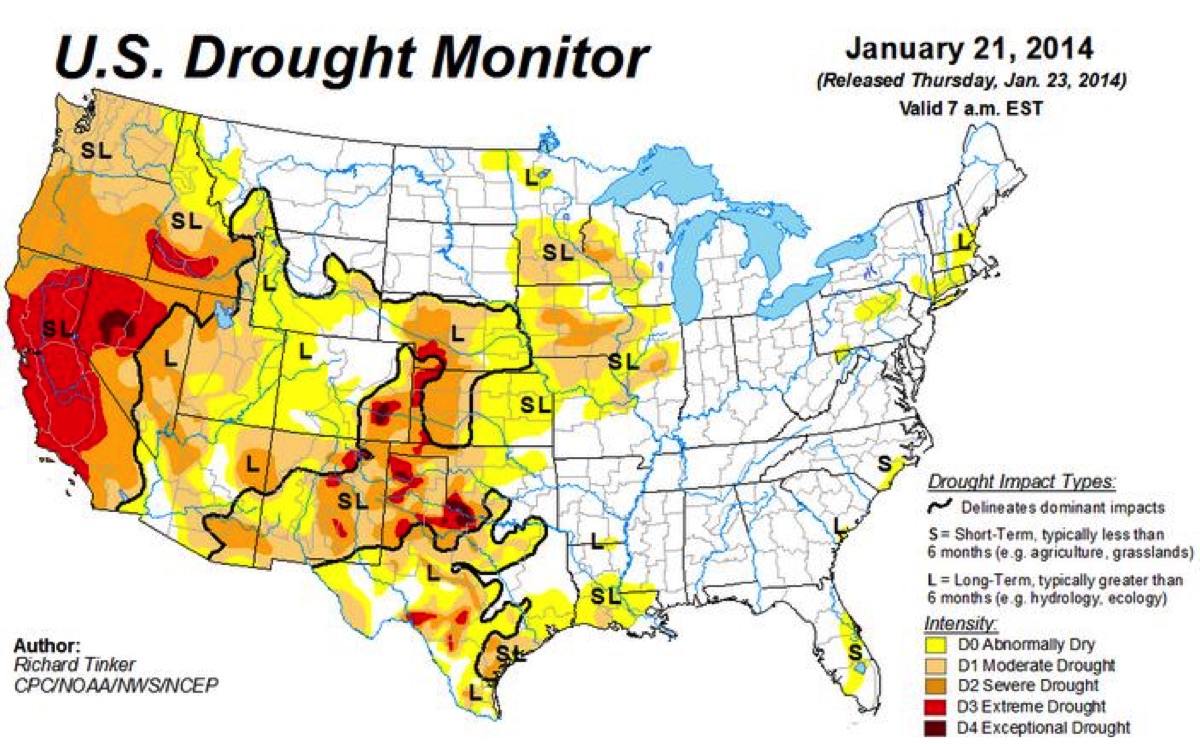
10 Water Conservation Tips To Counteract The California Drought
January 23, 2014
Current Drought Conditions in California
Many parts of California experienced the driest year in recorded state history in 2013. And current conditions in 2014 don't look much better.
Just last week, Governor Edmund G. Brown Jr. declared a State of Emergency and directed state officials to take all necessary actions to prepare for drought conditions.
“We can’t make it rain, but we can be much better prepared for the terrible consequences that California’s drought now threatens, including dramatically less water for our farms and communities and increased fires in both urban and rural areas,” said Governor Brown. “I’ve declared this emergency and I’m calling all Californians to conserve water in every way possible.”
To help green industry professionals in California prepare for the shift in business that accompanies drought conditions and the inevitable water restrictions that follow, Jenny Barnett, Horizon's Bay Area Regional Manager, asked local industry expert Peter Estournes to identify key water management practices that will become more and more essential in the coming years. Here is his response:
10 Water Conservation Tips for Landscape Professionals
-
Check for Leaks and Repair - Leaks can occur for many reasons and in many parts of watering systems. Review sites weekly for "weeping" valves, sprinklers, hose bibs, etc..
-
Incorporate New Technology - There are many types of smart water products that significantly decrease the amount of water used without sacrificing plant health. Weather based controllers that apply water according to weather conditions, soil type, sprinkler type, exposure and other variables. Rain shut off devices which interrupt irrigation cycles during rain events. Drip irrigation and sub-surface irrigation that get the right amount of water directly to the root system.
-
Learn to Read Water Meters - This might be the most important tool in your arsenal. A water meter can tell you if there is a leak somewhere and is an invaluable tool for using a water budget for the site. Regularly reading a water meter can point to anomalies in water use that can then be traced and repaired if needed
-
Program Irrigation Controller Efficiently and Run Multiple Cycles - Also called cycle and soak. This allows for infiltration into the ground and percolation through the soil. Base your programming on a water budget that is site specific.
-
Hydrozoning - Grouping plants with similar watering needs together. This is a requirement of the California Model Water Efficient Landscape Ordinance which went into effect in 2010.
-
Minimize Evaporation - Mulch! Mulch! Mulch! Minimizing evaporation through the proper use of mulch greatly reduces water lost to the air.
-
Check Soil Moisture Before Irrigating - If the soil is moist to 4" below the surface, hold off watering. A 6" long screw driver or soil probe are good tools for this.
-
Avoid Runoff - To gauge the time to run off, turn on a sprinkler zone and track the time until water runoff begins. That is the amount of run time that should be entered into the controller followed by at least 30 minutes before the next cycle.
-
Utilize Water Budgeting - A plan for using a defined amount of water over a certain length of time that is based upon weather pattern (Evapotranspiration), type of plants and size of the area irrigated. Water use is tracked by a water meter then compared to the budget and adjusted accordingly to meet the budget.
-
Learn Soil/Plant Relationships - Landscape plantings need healthy soil to grow and thrive. The more healthy a plant is, the more stress it can tolerate. Knowing soil type will help with irrigation scheduling. Being able to identify plants will indicate how to best care for the landscape as a whole. In times of drought, reducing fertilizing and pruning can help plants survive with a reduced amount of water
Recommended Resources
1. QWEL - Recently recognized as a WaterSense labeled certification program, Qualified Water Efficient Landscaper training is an affordable, proactive, and local approach to reducing landscape water demand. QWEL provides graduates with knowledge in water efficient and sustainable landscape practices including water management and preservation of other valuable resources. Graduates are eligible to become a WaterSense Irrigation Partner.
2. BizPro Training Videos - A series of training videos produced by Horizon that show how to grow your business through niche opportunities. Current videos focusing on water conservation include: Growing Your Business Through Water Conservation, Smart Water Controllers 101, Smart Water Sprays & Nozzles, and Rain Bird Drip Irrigation Conversion.
About the Author
Peter Estournes, vice president of Gardenworks Inc., has been involved in the landscape industry since he was a young boy working for his father’s landscape company.
Peter graduated with a degree in Ornamental Horticulture from Cal Poly Pomona and has worked as a nurseryman, grower, consultant, and contractor. He is licensed by the state of California as a Landscape Contractor (C-27) and Qualified Pesticide Applicator. He is also a Certified Landscape Professional and Certified Landscape Irrigation Auditor.
